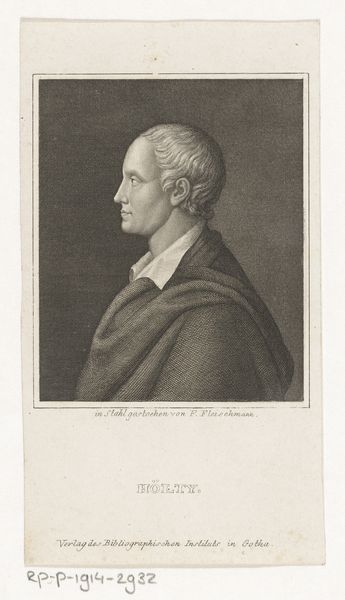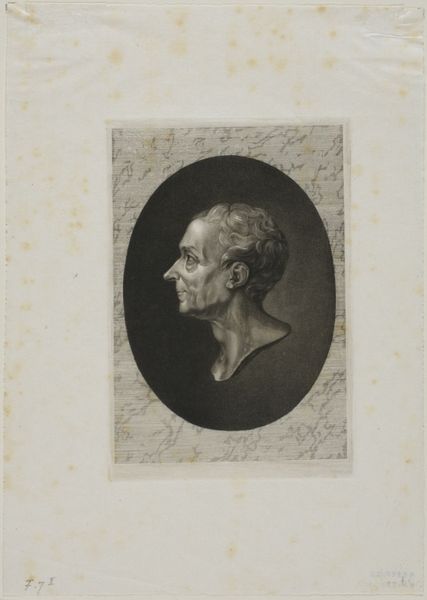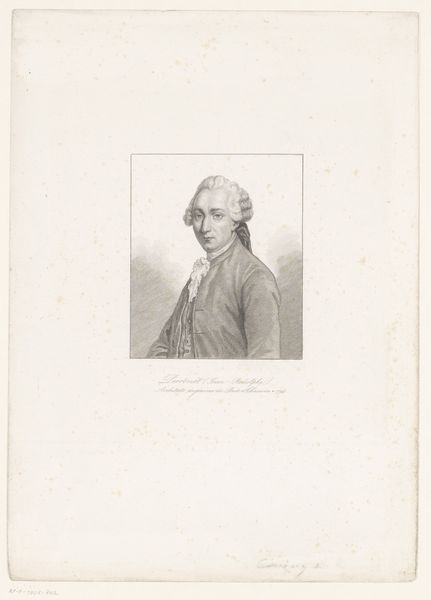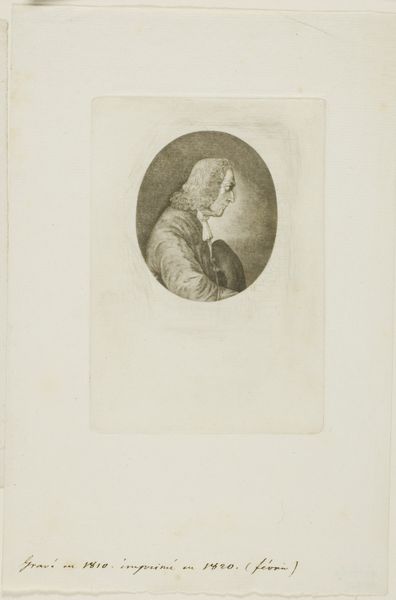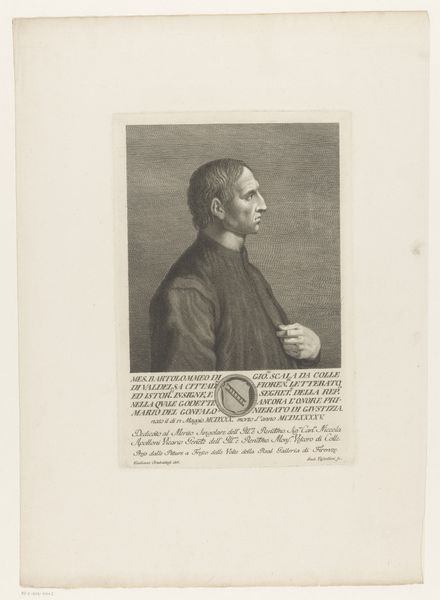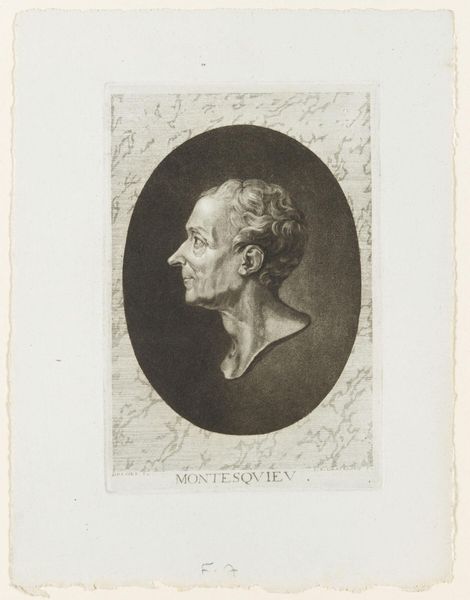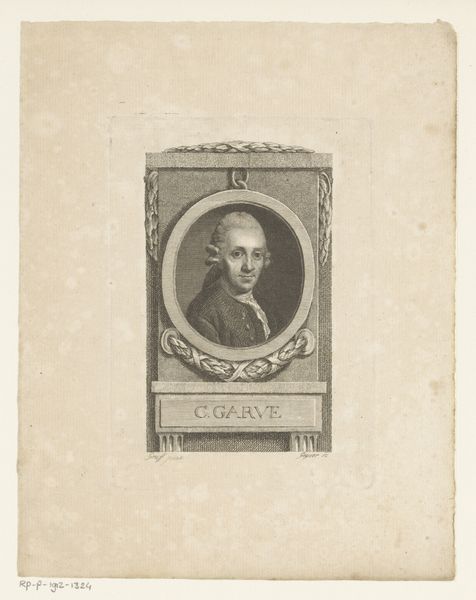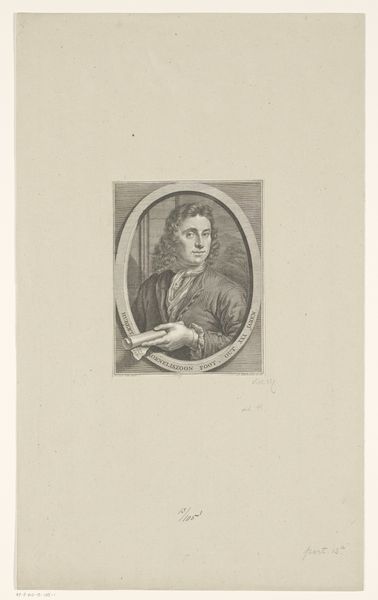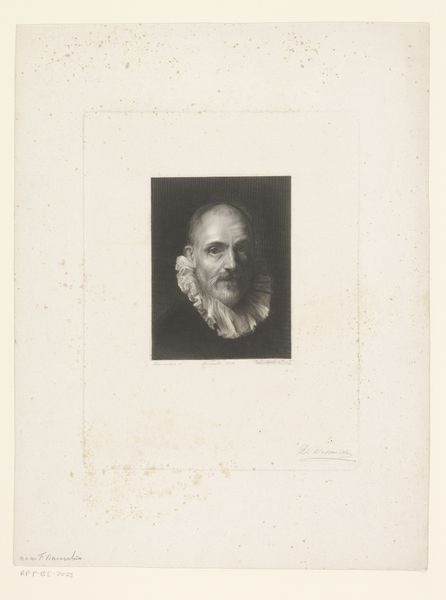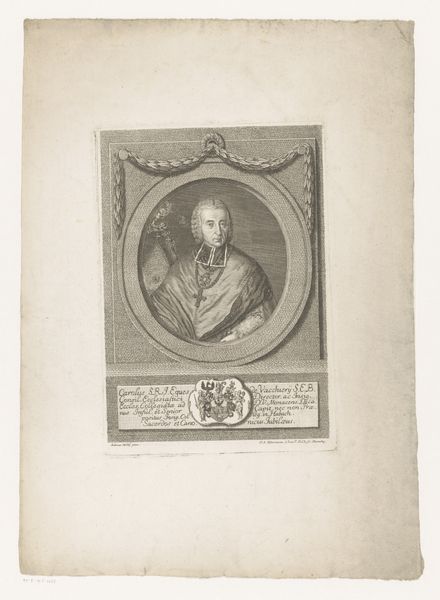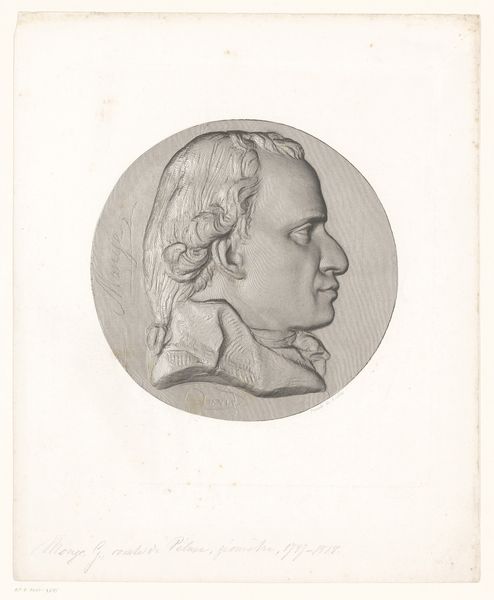
print, paper, engraving
#
portrait
#
16_19th-century
# print
#
figuration
#
paper
#
line
#
engraving
#
realism
Dimensions: height 223 mm, width mm
Copyright: Rijks Museum: Open Domain
Curator: This is a portrait of Ludwig Hölty, an engraving crafted sometime between 1801 and 1834 and currently held at the Rijksmuseum. What are your first impressions? Editor: Restrained. Precise. I'm drawn to the stark simplicity—just clean lines and subtle shading giving form to the man. You can almost feel the texture of the paper, see the artisan's labor. Curator: Absolutely. This was a time of burgeoning print culture; portraiture became more widely accessible, impacting notions of identity and public persona. Hölty, though a relatively minor poet, would have circulated within specific literary circles. Editor: And this engraving process would have been fairly labor-intensive. Someone meticulously etching lines into a metal plate, inking, and pressing. Think of the skill involved in translating a likeness this way! It connects us to that artisan's work. Curator: Indeed. Printmaking served as a tool for disseminating ideas, shaping political discourse and cementing legacies beyond the elite. Who was deemed worthy of such portrayal held significance. It became a form of cultural capital. Editor: Though, doesn’t it also strip something away? This process necessarily reduces tone and volume. The hand is ever-present. Are we seeing Hölty or are we mainly experiencing Fleischmann's skill and labor? Curator: Perhaps both are inextricably linked. This isn't a spontaneous photograph; it is a constructed representation of someone positioned within specific societal roles. That construction informs our reading. The gaze he directs tells a whole story. Editor: And the very materiality of it implies reproduction. The purpose wasn’t necessarily to honor an individual likeness, as painting might be, but rather for distribution, communication, for Hölty to travel far beyond his community. Curator: Exactly. The ability to disseminate images broadly had considerable power—reshaping social networks and intellectual life itself. Editor: It all reminds me that every work, regardless of perceived value, reflects processes—and those processes themselves bear complex political and social implication. Curator: Yes, and understanding this work, it prompts you to contemplate how portraiture and distribution shaped public perceptions. Editor: Definitely! From process to reception, it has clearly given me so much to contemplate.
Comments
No comments
Be the first to comment and join the conversation on the ultimate creative platform.
